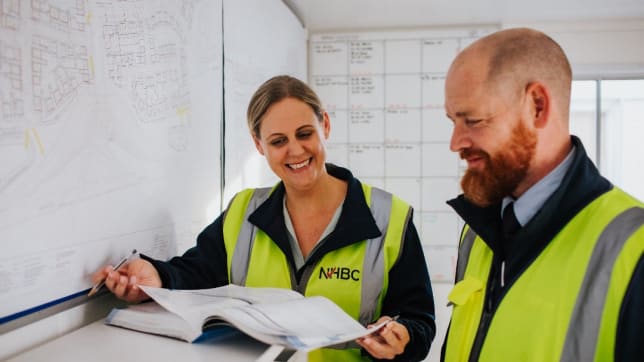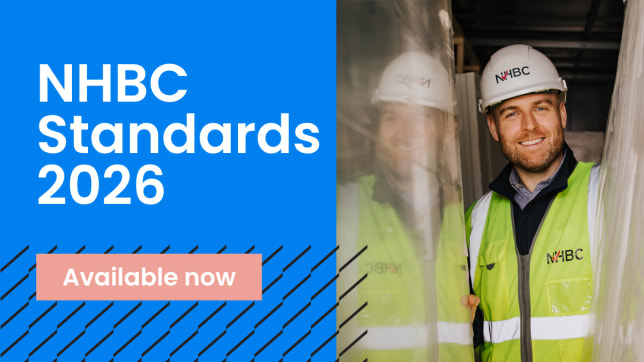NHBC Standards
Your essential guide to house building from foundations to roofs and finishing

What are NHBC Standards?
The NHBC Standards define the technical requirements and performance standards for the design and construction of new homes registered with us and provide guidance on how these can be achieved.
Our dedicated Standards team is committed to continuous improvement. They work with stakeholders across the industry to ensure that the NHBC Standards keep pace with regulatory change, reflect the latest consumer expectations and the industry’s needs. This means that the Standards are always relevant, providing additional support and guidance to help builders and developers to raise standards in house building by championing high-quality homes and protecting homeowners.
New changes in NHBC Standards 2026
Following our annual review, NHBC Standards 2026 feature mostly minor amendments to clarify or reinforce existing technical positions, with only 1.2% of clauses having changes that represent new positions. These new Standards apply to every NHBC-registered home whose foundations are begun on or after 1 January 2026, throughout the UK unless otherwise stated.
We have also improved cross-referencing between chapters, updated the numbering of tables and drawings and removed some building control guidance from the Standards to clarify their purpose as warranty guidance.
The most significant changes are:
- Chapter 2.1 – Technical Requirement R3d has been updated
- Chapter 3.2 – guidance on rendering in cold weather has been updated
- Chapter 6.5 – this chapter has been updated to reflect current industry practice and the requirements of BS EN ISO 1461 in relation to galvanising of hot-rolled structural steelwork
- Chapter 6.11 – updated checked rebate drawing and existing guidance strengthened to ensure robust detailing at wall/roof abutments
- Chapter 7.2 – prescriptive requirement for platforms removed and requirement for risk assessment introduced, and requirement for zonal classification of underlays introduced
- Chapter 10.1 – greater clarification given on structural requirements for garage floors and requirement to separate absorbent materials (plasterboard ceilings) from single-skin masonry walls introduced.
Conversions and renovations 2023
The Standards for Conversions and Renovations provide guidance on the type of project that will be acceptable to NHBC, the scope of the survey(s) and work that will be required.
Conversions and renovations are projects that involve work to existing buildings or parts of existing buildings.
Discover more

Building Control
Technically excellent, nationally consistent service.

Technical resources
The resource centre for NHBC Standards, Building Regulations, technical apps, news and support.

Building Regulations England
Building Regulations apply to most new buildings and many alterations of existing buildings in England and Wales.
Technical disclaimer
Any technical information contained on this website is produced by NHBC as guidance solely for all our builder customers as to how to interpret the technical requirements in relation to the warranty cover provided by NHBC under its Buildmark, Buildmark Choice, Buildmark Link, Buildmark Solo, Buildmark Connect or any similar product from time to time. It has not been created or intended for distribution or use outside of that purpose. The technical information contained on this web page does not constitute advice and is not to be relied upon by any third party. Nothing on this web page is intended to, nor should it be taken to, create any legal or contractual relationship. Any third party who chooses to rely upon the information contained on this web page shall do so entirely at their own risk and NHBC accepts no duty of care or liability, however caused, in connection with its use or reliance by any third party.





